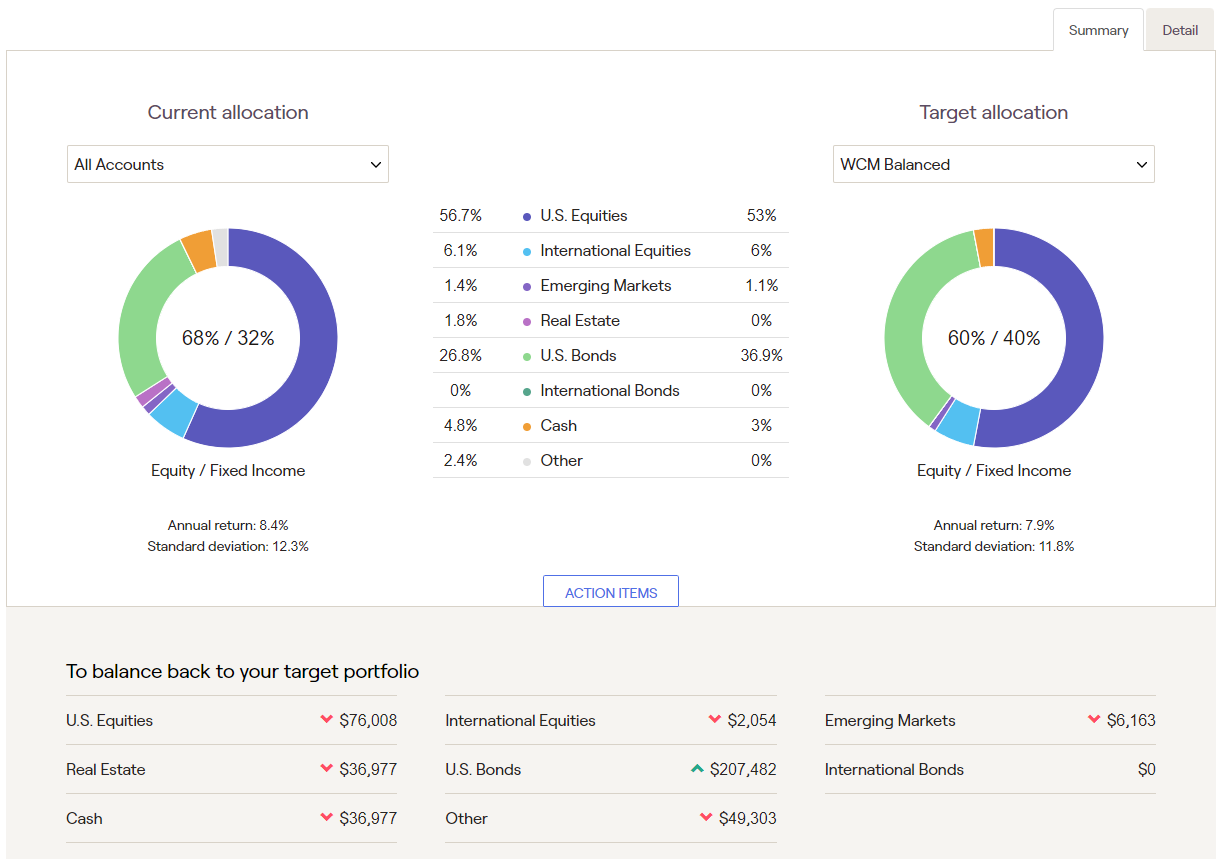Do I need to rebalance my portfolio?
Whether the market is going up or down, it's smart to rebalance your portfolio

Happy Wednesday,
Let’s talk about portfolio rebalancing.
For those of you who aren’t familiar, portfolio rebalancing is simply adjusting your current investment holdings to reflect a target investment mix, or asset allocation.
Let’s say you have 2 investments:
Investment A
Investment B
According to your financial plan, which takes into account your current and future anticipated financial resources and looks at how likely it is that you can accomplish your goals and support your lifestyle for the rest of your life, you should have arrived at a target investment portfolio mix.
An investment mix that provides sufficient comfort and confidence that you can, with some adjustments along the way, stay on track to live your life in the manner you want to.
Preferably this mix is among different asset classes that are well diversified and that don’t move in the same direction at the same time. This is also referred to as having “low correlation” among your investments.
So, back to our sample portfolio of investments A and B.
Let’s say our target investment mix is 50% investment A and 50% investment B.
However, keeping this mix constant can be a challenge because of:
Market fluctuations
Portfolio additions (saving)
Portfolio withdrawals (spending)
Let’s look at each one in just a little more detail…
Market Fluctuations
Regardless of what types of investments A and B represent, their prices will change.
If you start with a 50/50 mix, and A’s price goes up, you’ll now own more of A relative to B, at least in dollar terms.
But what if A’s price doesn’t change, but B’s price falls?
Again, in dollar terms, you’ll now own more of A than B.
This can create risk management problems, because as you get too far away from your target mix of 50/50, you’re taking on more risk because you now have a higher exposure to one investment relative to the other.
In both of the examples above, if you find yourself with more of investment A than B, the simple solution is to sell a little of A and buy a little more of B such that you get back to your target mix of 50/50.
And yes, this could create a tax liability, but better to pay taxes on a gain than watch your portfolio potentially lose a lot more because your investment risk got out of whack.
Here it is in dollar terms…
You own $1,000 of investment A and $1,000 of investment B.
If investment A goes up by 5%, it’s now worth $1,050. If your balance in investment B is still worth $1,000, you now own a little over 51% in investment A and a little less than 49% of investment B.
To rebalance, simply sell $25 worth of investment A and use it to buy $25 of investment B.
Now your portfolio is worth $2,050 with $1,025 in A and $1,025 in B.
You’re back to a 50/50 investment mix.
For now at least. 😉
For a visual, here’s a screenshot from one of my financial planning tools that highlights the differences between a client’s current portfolio mix (asset allocation) versus their target portfolio:
Portfolio Additions
Another way to rebalance your portfolio is with deposits, or savings, into your account(s).
Using the example above where A goes up $50, rather than selling some of A to buy more B, you could instead add $50 to the portfolio and invest all of it into B.
Now your portfolio is worth $2,100 with $1,050 each in A and B.
Once again, back to 50/50.
And there’s no exposure to potential capital gains taxes in this scenario because we didn’t have to sell anything.
However, if you’re just automatically buying an additional $25 of investment A and $25 of investment B each month, your portfolio will almost certainly drift from your target mix.
Which you’ll want to rebalance from time to time.
Portfolio Withdrawals
Using portfolio withdrawals to rebalance your investments is simply the reverse of the “portfolio additions” explained above…
If you need to take money out of your portfolio and A is now worth $1,050 and B is worth $1,000, you could just sell $50 of A and use it for spending needs.
This results in a portfolio with $1,000 each in A and B and you’ve gotten $50 out of your portfolio for spending or lifestyle needs.
But beware that this could create potential capital gains when you sell investment A. So while you took out $50 “gross,” your “net” (after-tax) income might be less.
That’s why ongoing tax planning is an important part of the work I do with my clients.
And just like in the example about portfolio additions above, if you’ve setup automated withdrawals from your portfolio where you’re pulling $50 per month out of your portfolio – $25 each per month from A and B – again, you’ll drift away from your target investment mix over time.
The above are just a couple of ways to keep your portfolio (and risk) in balance. Despite market fluctuations and cash flow into or out of your portfolio.
There are a lot of approaches and perspectives on how often you should rebalance.
Or what should trigger you to rebalance your investments.
Maybe I’ll tackle that in a future essay...
Another benefit of portfolio rebalancing is that it creates a disciplined way to incrementally “buy low and sell high” which is the opposite of what most investors tend to do.
It’s also the opposite of what most financial professionals do too, FYI.
By taking small profits when an investment is up and reinvesting it into another relatively lower priced investment, you’re literally selling high from one investment and buying low in another.
And remember, portfolio rebalancing works both ways.
When the stock market was falling in the second half of 2023, my portfolio management team was rebalancing my clients’ portfolios by selling a little of our bond fund – which were up in price relative to stocks – and buying a little more of our stock fund(s) which were less expensive relative to bonds.
More recently, as stocks have generally been going up since November, my portfolio management team has been selling some of my clients’ stock fund(s) and buying more of their bond funds as the market has been rising.
Again, rebalancing works both ways.
Naturally, you might be asking yourself, why not just leave the money alone and “let it run” while stocks are going up?
And yes, that would be a great strategy…
If you have a fully functioning crystal ball and can see the future.
Since no one can predict the market, portfolio rebalancing is the smartest way to manage your portfolio and your investment risk while incrementally selling high and buying low in all types of market environments.
In fact, did you know you can (and should) also rebalance your portfolio of goals?
Click here to read more about this idea.
And hit reply or leave a comment below and let me know your thoughts on portfolio rebalancing.
Have any suggestions?
I love hearing from readers, and I’m always looking for feedback.
Hit reply and say hello - I’d love to hear from you.
And as always, thanks for reading.
Until next Wednesday,
Russ



